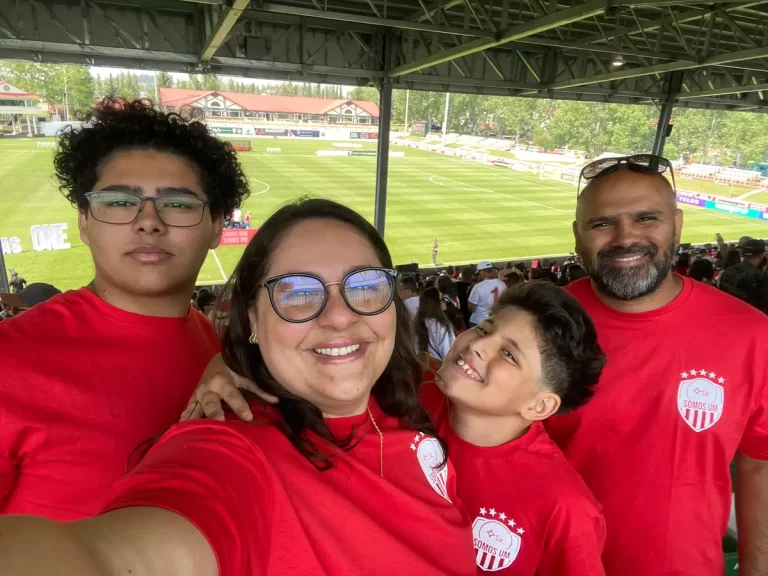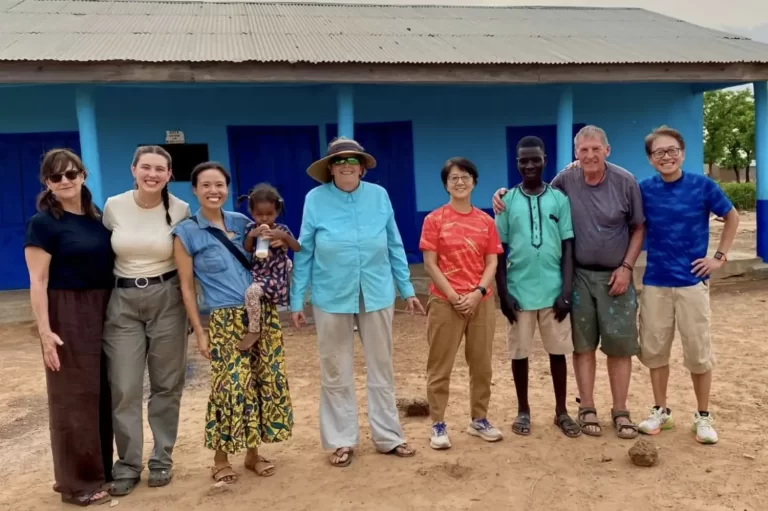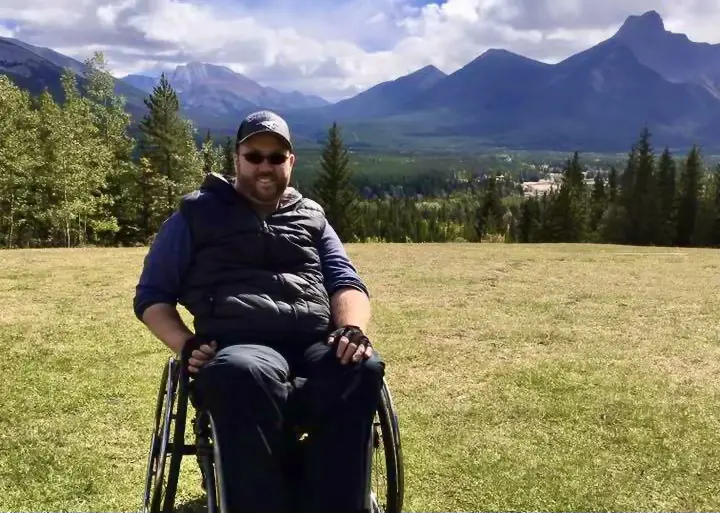
Rethinking the Term “Disability”: Erik’s Story
I grew up in Calgary but was born in Hamilton, Ontario. Most of my family is back out east in the southern Ontario area. I was raised in an Anglican church and went to a Catholic school when I was younger. I was pretty athletically involved. I was a big kid. By the time I was 15 years old, I was 6’1 and 210 pounds.
Then things took a real turn in 1994.
I was involved in a very major car wreck in April of 1994 which resulted in me becoming an incomplete quadriplegic at the C4/5 level and the T4 level. I had multiple other injuries both with my limbs and internally with my lungs which resulted in me being in hospital for about 8 months.
When a person ends up with a spinal cord injury, no spinal cord injury is the same. Everybody presents different levels of paralysis and abilities that reveal themselves in the body. I have two specific spinal cord injuries at the C4/5 level and the T4 level. My T4 level break is complete, which means that my spinal cord was completely severed at the mid-chest level and I have no sensation or muscle control below that.
Whereas the C4/5 level, the cervical area, which is basically just above the shoulder line on your neck, was compressed and there was some nerve damage, but it wasn’t complete. That means there are some levels of what they call “return”. So, while some people at the C4/5 level are completely unable to maneuver their hands or their arms, I am able. A lot of people mistake me for a paraplegic whereas I am actually an incomplete quadriplegic. I have difficulty with my right arm and hand.
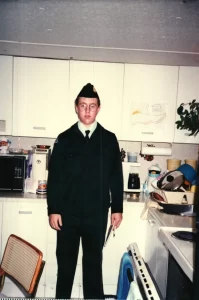 I was 15 years old when I was in that car accident. It caused a lot of internal questions of identity: “Who am I? What is gonna happen in my life? What do I expect for the future?” Prior to that, I had expectations of looking for scholarships for sports and athletics. I had hopes of building on my physicality and who I was in the very real athletic sense. My world had significantly shrunk and my understanding of who I was significantly changed.
I was 15 years old when I was in that car accident. It caused a lot of internal questions of identity: “Who am I? What is gonna happen in my life? What do I expect for the future?” Prior to that, I had expectations of looking for scholarships for sports and athletics. I had hopes of building on my physicality and who I was in the very real athletic sense. My world had significantly shrunk and my understanding of who I was significantly changed.
I tell people it’s a real rebirth. It’s a real rebirth.
One of the things that dramatically impacted that change of identity was how my mother was also in the vehicle with me while I was driving. I of course, had to have a licensed person with me as I had a learner’s license. As a result of that car accident, she passed away. And all of a sudden, I was left in a world where I was pretty much on my own. I was forced to begin my independent life.
Interestingly enough, I think God can actually prepare us for traumatic events, for those Damascus Road-type moments. I remember distinctly prior to the accident, I was walking down the street, bouncing a basketball as I was often doing. And I felt this kind of real voice inside me, this internal voice that asked me,
“How would you like to be in a wheelchair for the rest of your life?”
I actually grew up around people in wheelchairs. Ironically, my mother worked in a rehabilitation unit as a nursing assistant for those who had spinal cord injuries. Recently, I was actually flipping through old photographs that she took of people in wheelchairs who were at the early Paralympic games in Canada.
So when I heard this question, my response was rather one you would not have expected. I said, “Wow, this would make me truly unique. This would maybe make me cool.” And I thought, yeah, I could handle being in a wheelchair for the rest of my life, not realizing the whole depth and understanding the challenges that it brings with it.
It probably took another year or so afterwards before community started coming around me and really moved me in a direction that supported renewed self-discovery. I began to have others around me who had disabilities and would show me that life goes on. I made mistakes along the way, of course. One particular obstacle was having to learn how to try and fight for financial assistance.
I had to learn very early how to advocate for social assistance to support my independent life in the community. While I was mostly working on my own, I had social workers and community that had gone through the same similar roads who guided me.
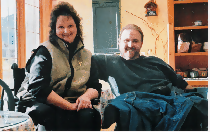
I also eventually married a wonderful woman in 1999 – Bonnie. She too is in a wheelchair as well.
As I began to find a sense of self, I felt a desire to return to the faith I grew up in.
I began to ask the question, “Who is the God that I grew up with?” I had an understanding of God. I saw church as a weekend activity, a community to be involved with. But I don’t know if I had a real relationship with God. I do remember distinctly having a moment in the basement of our house, eventually. I was meditating, (the kind I was taught in martial arts). And while I was trying to empty my mind, I felt a real presence there with me.
And I asked this presence, “God, if you’re real, if you’re really real, then like Moses in the desert, I need to see you.” And this presence really washed through me.
And there was a real transformation that took place here in the early 2000s.
It thrust me into diving deeper into scripture, really reading the Bible for myself rather than having it read to me. I began really asking the deeper questions of theology. I eventually began my studies in College, and I ended up with a Bachelor’s Degree in Theology. I got involved with house church communities. Bonnie and I even opened our own house church in our home in 2008, after a trip to Vancouver and hearing about Missional Theology.
We grew more and more involved. I became part of the leadership team, overseeing a network of house churches across Canada. And I completed my Master’s Degree in Religious Education, focusing on the Missional Leadership. There was always this undertone though of, “You should be in a disabilities ministry”. I always resisted it because I felt like I am more than just my wheelchair.
I’m more than just the disability that I struggle with.
I explored and wrestled greatly during that time. I would say, “I’m not disabled, you know. The very definition of disability is a physical or mental condition that limits a person’s movements, senses, or activities.” I felt like I was not limited in any way. The potential for my life is always as scripture says, “You can do all things through Christ who strengthens you”. (Philippians 4:13) And so I can do all things, right? I’ll find a way. It might be different than someone else, but I can do it.
I’ve grown to learn that yes, I have a history behind me. Yes, I have a culture that has shaped me and disability has a place in my life. There are certain things that I cannot do, just as there are certain things that others are unable to do. We all have disabilities; we all have things we can and cannot do. And we can also create fears, biases, and attitudes that steer us away from that truth.
My earlier character steered away from disability. I had to ask myself, “What was it that made me afraid to acknowledge my disability? What were the biases I had?”
I really had to wrestle with that and set it aside so I could discover the true story that God was trying to tell through me.
It’s God’s image within each one of us that makes us human and makes us related. When I think of defining disability, I think it’s important that we pay attention to not only our own stories and our own understandings of disability, but listen to the stories of others as well as acknowledge their stories of disability. So that together we form a community that finds the deeper story—God’s story of disability—amongst all of us.
Jesus calls us to a life of fulfillment and to nurture a life-giving culture—one that says “You have a place here.” We need to bring a culture of life into communities that are suffering and ask ourselves, “How can we build them up?”.
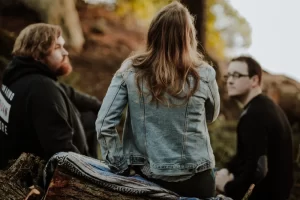
I think one of the other ways to really engage the community, particularly those with disabilities around you, is the practice of proximity. Proximity is taking that sense of presence and recognizing the ways that we entwine with one another and are connected. Ask yourself, “What are my disabilities? What are the defended biases and egos that prevent me from seeing those disabilities and acknowledging my relationship to those that also have visible and invisible disabilities?”
The reality is we all have a story to tell. One of the things I guess I’ve always lived with was the understanding that while change is inevitable in life, don’t let fear stop you. It’s just the ultimate reality. And we see that in disability and even in death, neither is an end to your story. They are places of new beginnings.
That’s the promise Christ gives us.
This was just a glimpse of Erik’s story adapted from Episode 8 of the “Can We Ask You This?” podcast. We thank Erik for sharing his story and his insights. Find more of his writing on his blog. What an amazing reminder to pause, be present for others, and meet each other where we are. Are you ready to share your story? Contact Angel Castillo.
You might also be interested in …

